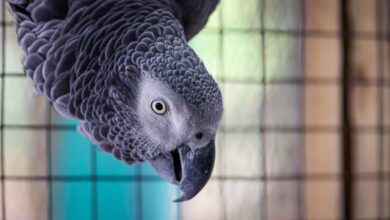The AI Revolution: Beyond Traditional CGI

Remember when AI was primarily the stuff of science fiction, or perhaps a helpful assistant for data analysis? Well, prepare to adjust your perception, because artificial intelligence isn’t just powering chatbots and self-driving cars anymore; it’s actively shaping the visual tapestry of our favourite streaming shows. And if you needed a stark reminder of this new reality, Amazon’s ‘House of David’ just delivered a cinematic mic drop.
The news hit recently: the second season of ‘House of David,’ the epic biblical drama following David’s rise to King of Israel, utilized over 350 AI-generated shots. Let that sink in for a moment. That’s not a handful of experimental effects; it’s a significant portion of its visual output. Even more striking? This represents a four-fold increase from its first season, with much of that AI heavy lifting going into complex battle scenes. And the show’s creator? Unapologetically, unreservedly, not sorry.
This isn’t just a technical footnote; it’s a bold statement about the evolving landscape of visual storytelling. It challenges our traditional notions of what goes into filmmaking and raises fascinating questions about artistry, efficiency, and the very future of digital entertainment. Are we on the cusp of a new golden age of visual spectacle, or treading a path that could redefine the role of human creativity?
The AI Revolution: Beyond Traditional CGI
When we talk about special effects in film and TV, our minds often jump to Computer-Generated Imagery (CGI). Think of the fantastical creatures in ‘Avatar’ or the elaborate cityscapes in superhero blockbusters. CGI has been the bedrock of visual spectacle for decades, painstakingly crafted by legions of talented artists and technicians. But AI, as demonstrated by ‘House of David,’ is a different beast entirely.
While CGI involves artists meticulously modelling, texturing, animating, and rendering every single element, AI offers a new paradigm. It can generate elements, environments, and even character movements with astonishing speed and scale. Imagine a sprawling battle scene: instead of individually animating hundreds, or even thousands, of soldiers, AI can be trained to populate these scenes, create unique variations in their gear, and even simulate realistic combat actions based on learned parameters. This isn’t just automation; it’s generation.
Scalability and Speed: The AI Advantage
The scale of ‘House of David’ is a prime example of where AI shines. Depicting ancient armies, massive battles, and the grandeur of a burgeoning kingdom requires immense resources. Traditional CGI for such sequences can be astronomically expensive and incredibly time-consuming, often stretching production schedules to their limits. AI, however, can democratize this scale, making it accessible to productions that might not have a Marvel-sized budget.
By leveraging AI for these 350+ shots, particularly in the battle sequences, the production likely achieved a visual scope and complexity that would have been far more difficult, if not impossible, within conventional constraints. This isn’t about replacing human artistry entirely, but about augmenting it, allowing creators to paint on a much larger canvas with previously unattainable brushes.
The Unapologetic Creator: A Vision for the Future
The creator’s stance on using AI is perhaps the most compelling part of this story. “Not sorry” isn’t a flippant remark; it’s a declaration of intent. It signifies a belief that AI is not just a stopgap measure or a budget-cutting tool, but a legitimate, powerful, and perhaps even essential creative instrument.
This mindset embraces innovation rather than fearing it. In an industry often characterized by long production cycles, soaring costs, and immense pressure to deliver visually stunning content, AI offers a compelling solution. For a creator, it could mean the ability to fully realize a grand vision without having to compromise due to technical limitations or financial realities. It’s about achieving creative ambition that might otherwise remain confined to the storyboard.
Beyond Efficiency: A Creative Partner?
It’s easy to frame AI solely through the lens of efficiency and cost-saving, but there’s a deeper implication. Could AI be evolving into a genuine creative partner? By handling the repetitive, labor-intensive aspects of visual creation, AI might free up human artists, directors, and writers to focus on the nuances of storytelling, character development, and emotional impact. It allows them to iterate faster, experiment more boldly, and push visual boundaries previously considered unachievable.
This isn’t to say there aren’t valid concerns about the future of jobs in the VFX industry – a topic that deserves serious discussion. However, the ‘House of David’ creator’s stance suggests a belief that AI, when wielded thoughtfully, enhances the creative process, rather than diminishing it. It’s about leveraging powerful tools to tell more compelling, visually rich stories, and perhaps, telling stories that simply couldn’t be told before.
What This Means for the Future of Entertainment
The ‘House of David’ saga is more than just an interesting tidbit about a specific show; it’s a bellwether for the entire entertainment industry. The widespread adoption of AI in visual production is no longer a distant possibility; it’s happening now, and at an accelerated pace. This has profound implications for how content is made, consumed, and even perceived.
For one, it could usher in an era where independent filmmakers and smaller studios can achieve production values previously exclusive to major Hollywood blockbusters. Imagine a burgeoning talent with a compelling story, able to create expansive worlds and epic sequences with a fraction of the budget and time. This could lead to an explosion of diverse and ambitious content, democratizing visual storytelling in an unprecedented way.
However, it also sparks crucial conversations about authenticity, creative ownership, and the potential for a homogenization of visual styles if AI models become too ubiquitous or lack sufficient unique creative direction. As viewers, we’ll need to evolve our understanding of “behind the scenes” and appreciate the blend of human ingenuity and algorithmic prowess that brings these worlds to life.
The debate around AI in creative fields is far from settled, and it will undoubtedly continue to evolve. But what ‘House of David’ clearly demonstrates is that AI is not just a tool; it’s a transformative force. Its creator isn’t sorry, and perhaps, neither should we be – for witnessing the dawn of a new, complex, and incredibly exciting chapter in the art of visual storytelling.
As we move forward, the question isn’t whether AI will be part of our entertainment, but how we, as creators and consumers, will choose to interact with it, shape its use, and ultimately, define its place in the tapestry of human imagination.





